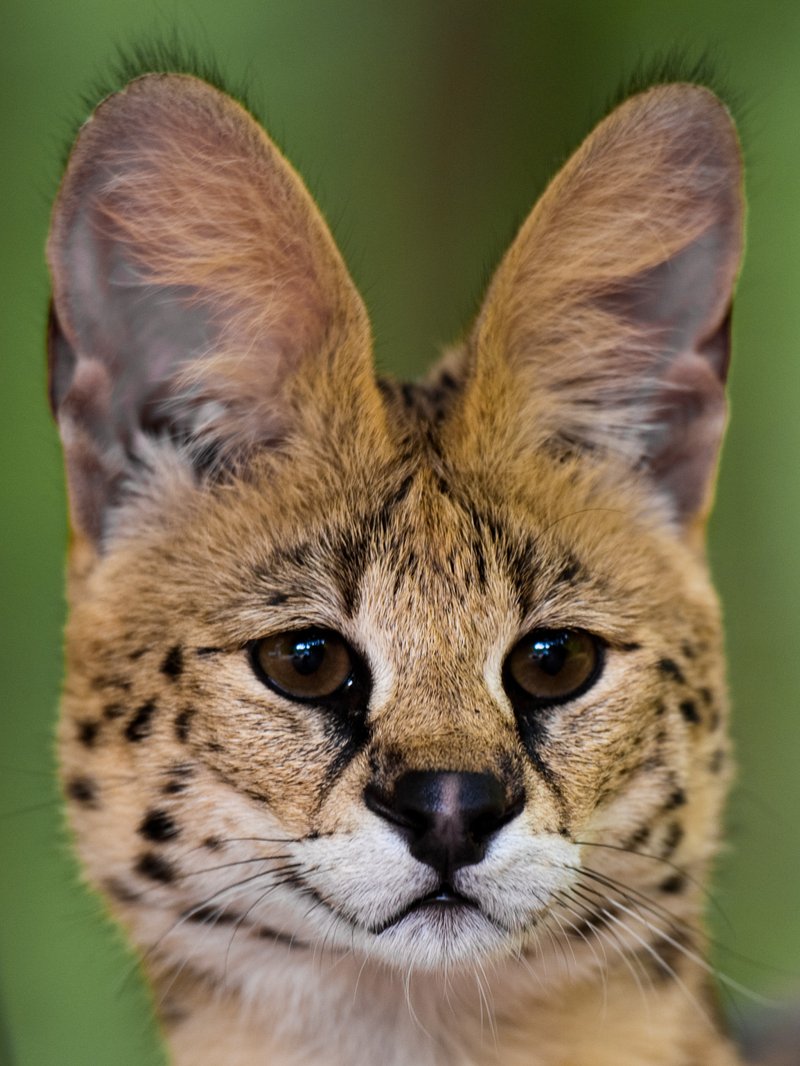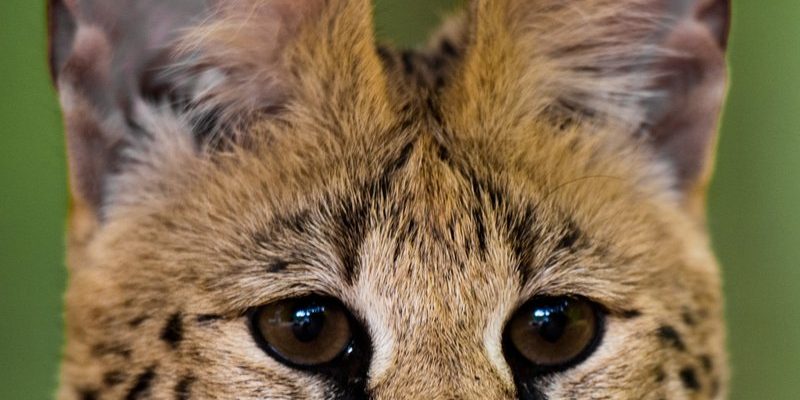
So, why are servals so interesting? Well, they have some unique characteristics that set them apart from other felines, and they play an important role in their ecosystem. Let’s dive into some fascinating facts about these amazing creatures that will leave you wanting to learn even more!
1. The Serval’s Unique Appearance
When you first lay eyes on a serval, it’s hard not to be mesmerized by its beauty. They have long legs, large ears, and a spotted coat that can vary in color from gold to gray. Their long limbs allow them to make incredible leaps—up to 10 feet in the air! Imagine a cat with the agility of a pro basketball player.
Those big ears aren’t just for show, either. They help servals hear even the faintest rustling of grass, making them excellent hunters. Think about it: every time they hear a small sound, they can pinpoint exactly where it’s coming from, thanks to their sharp hearing. This combination of looks and skills makes them perfect predators in the grasslands.
2. Habitat and Range
Servals are found predominantly in sub-Saharan Africa. They prefer savannas, wetlands, and grasslands, where they can easily stalk and pounce on their prey. Imagine living in a vast, open space with plenty of room to run and hide—this is the serval’s dream home.
These cats are mostly solitary and are active during the day, which is a little different from many other big cats that prefer the nighttime. You might be wondering why they have this schedule. Well, being daytime hunters helps them avoid competition with nocturnal predators like lions and leopards. They’ve carved out their niche in the animal kingdom, and they do it quite well!
3. Diet and Hunting Skills
Let’s talk about what servals eat—because, honestly, it’s a bit surprising. While you might think they only munch on your standard cat food, servals are more adventurous. They primarily feast on small mammals like rodents, birds, and even insects. Picture a serval stalking its prey, sneaking through tall grass, and then—bam—leaping into action!
Their hunting strategy is fascinating. Servals use a combination of stealth and speed. Once they spot an animal, they can leap up to 6 feet in the air to catch birds mid-flight. It’s almost like they’re performing in a high-flying circus! This impressive skill helps them to adapt and thrive in their wild habitats.
4. Communication and Social Behavior
You might think that since servals are solitary hunters, they wouldn’t have much to say to each other. But that’s not true! They communicate through a variety of sounds. Whether it’s a series of chirps or a loud “meow,” servals have a whole language of their own.
These sounds help them attract mates and mark territory. Imagine standing in the savanna and hearing a mix of cute chirps and deep calls echoing around—it’s quite the communication network! They also use scent marking to establish boundaries, which is pretty common among many wild animals.
5. Reproduction and Lifespan
When it comes to love, servals have their own way of doing things. They mate throughout the year, but spring is often the peak season. After mating, a female serval will give birth to a litter of about one to four kittens. These little furballs are incredibly cute and rely heavily on their mother for the first few months of life.
The kittens start developing their skills early. They learn to hunt by playing and mimicking their mother. As for lifespan, servals live about 10 to 12 years in the wild, but they can reach up to 20 years in captivity. It’s an adventurous life filled with challenges, and maternal care is vital for their survival.
6. The Serval’s Role in the Ecosystem
Every animal plays a part in its ecosystem, and servals are no exception. They help keep the population of small rodents and other prey animals in check. Without predators like servals, some of these prey animals could multiply quickly, leading to imbalances in the ecosystem.
Think about it: if too many rodents were around, they could strip vegetation and impact other species’ habitats. Servals help maintain that balance, showcasing the importance of every creature in the food chain. In their own way, they contribute to a healthy environment, which is pretty amazing.
7. Conservation Status
Sadly, servals face threats from habitat loss, poaching, and human-wildlife conflict. While they’re currently classified as “Least Concern” by the International Union for Conservation of Nature (IUCN), it’s crucial to stay aware. Habitat destruction due to agriculture and urbanization is a significant challenge for these elegant cats.
Conservation efforts are necessary to protect servals and their habitats. Many organizations are working to raise awareness and create protected areas where servals can thrive without human interference. You might wonder what you can do—supporting these initiatives can make a difference.
8. Servals in Pop Culture
You might be surprised to know that servals have made appearances in pop culture too! From documentaries that showcase their incredible hunting skills to plush toys that mimic their appearance, these cats have captured the imagination of many.
Perhaps you’ve seen them in wildlife documentaries, where their majestic leaps and playful nature are highlighted. This exposure helps educate people about their beauty and the importance of wildlife conservation. You might even find serval-inspired art or merchandise that brings a bit of their spirit into your home!
9. How to Spot a Serval
If you ever find yourself in Africa and want to spot a serval, here are some tips. Look for them in grasslands during the day, especially around dawn or dusk when they’re most active. They’re often seen near water sources, as that’s where prey is often plentiful.
Binoculars can help you see them from a distance without disturbing their habitat. But be quiet! The slightest noise can make them disappear like a whisper. Keep an eye out for those tall, slender shapes moving gracefully through the tall grass—if you’re lucky, you might just catch a glimpse of one!
10. The Serval’s Future
The future of servals is tied to the health of their ecosystems. With ongoing conservation efforts and awareness, there’s hope for these stunning creatures. Whether through protected parks or local initiatives, each effort counts toward ensuring that servals can thrive.
As we continue to learn about servals, it’s essential to appreciate their place in our world. By supporting wildlife organizations and advocating for conservation, you can help ensure that future generations will know the serval not just as a beautiful cat, but as a vital member of the African landscape.
As you can see, there’s more to servals than meets the eye! From their unique hunting skills to their role in the ecosystem, these fascinating cats deserve our attention and protection. So next time you see a picture of a serval, take a moment to appreciate the incredible story behind them.

